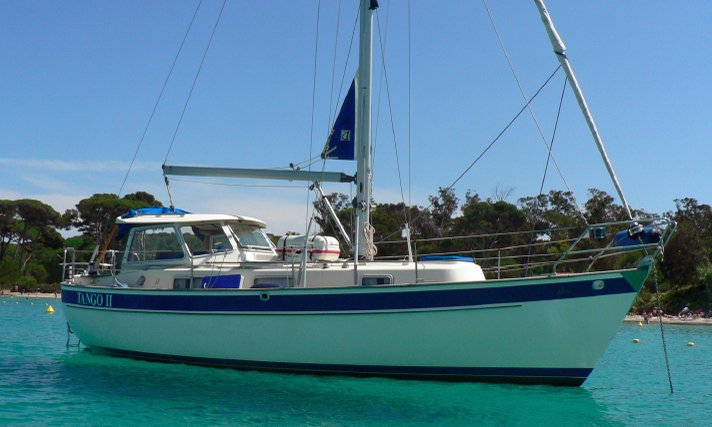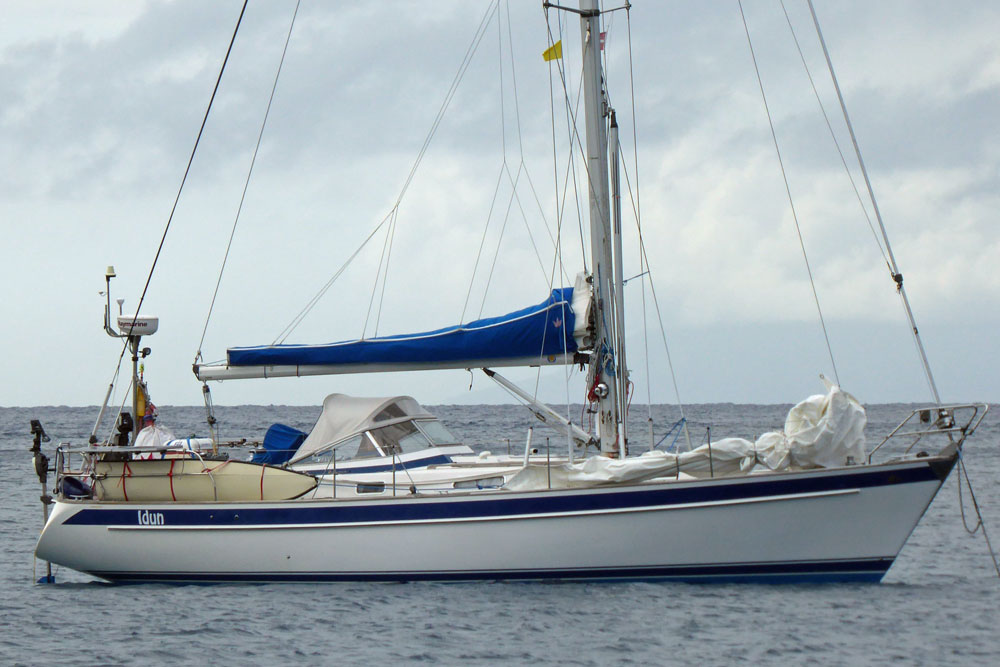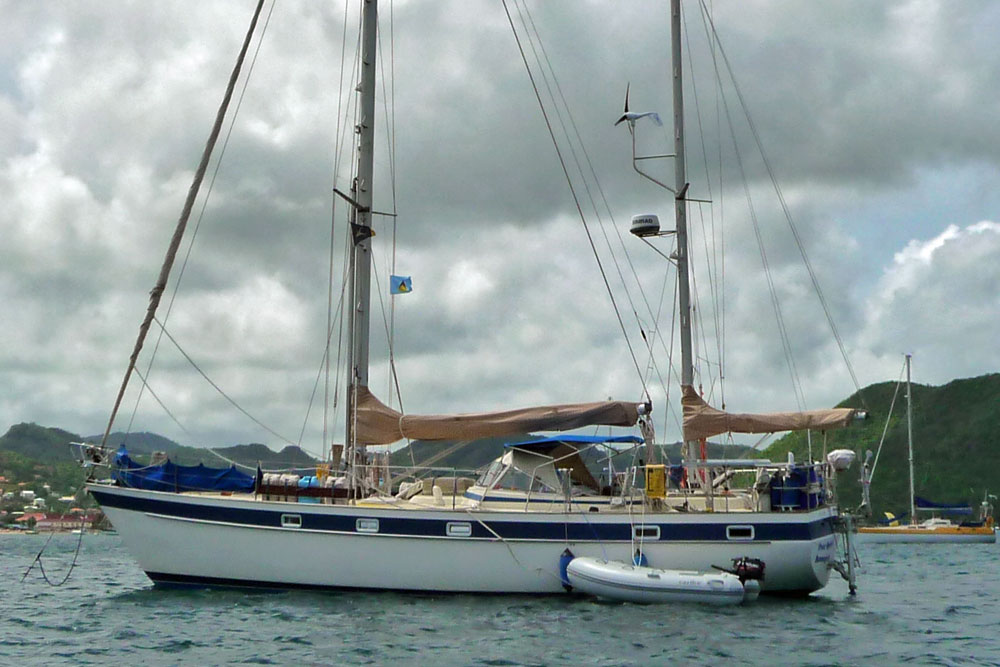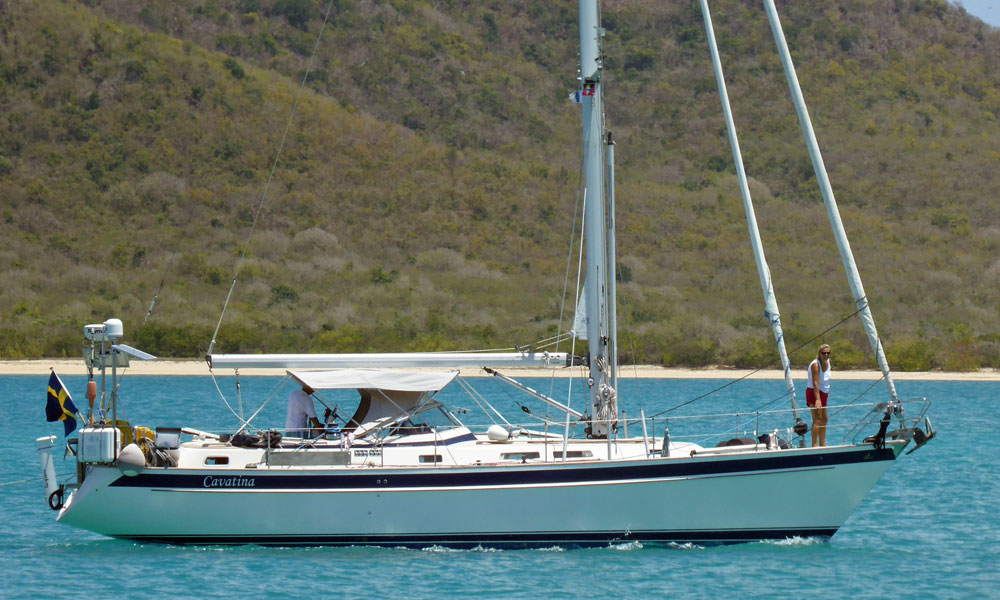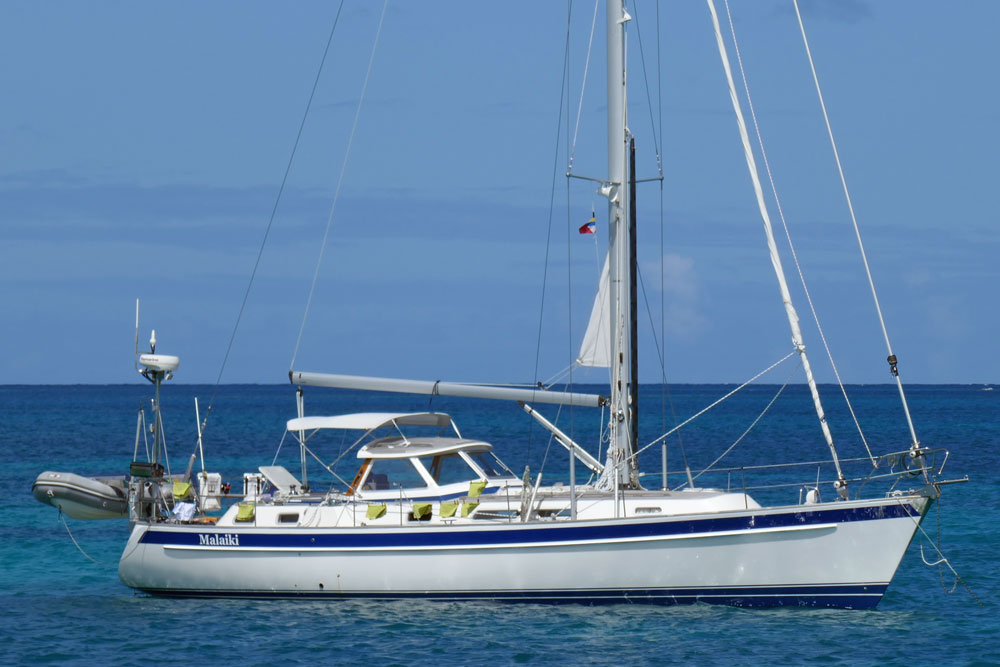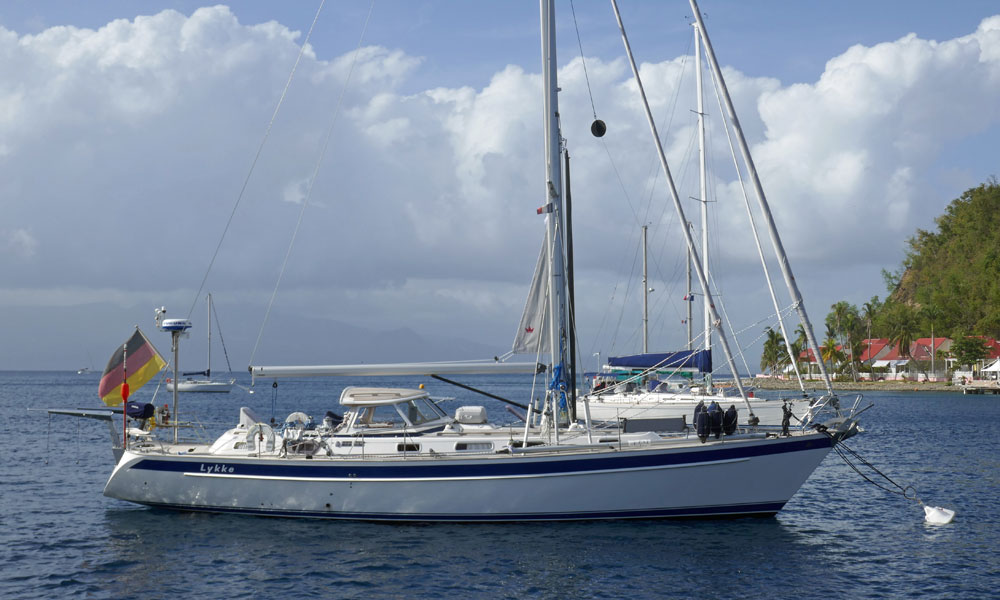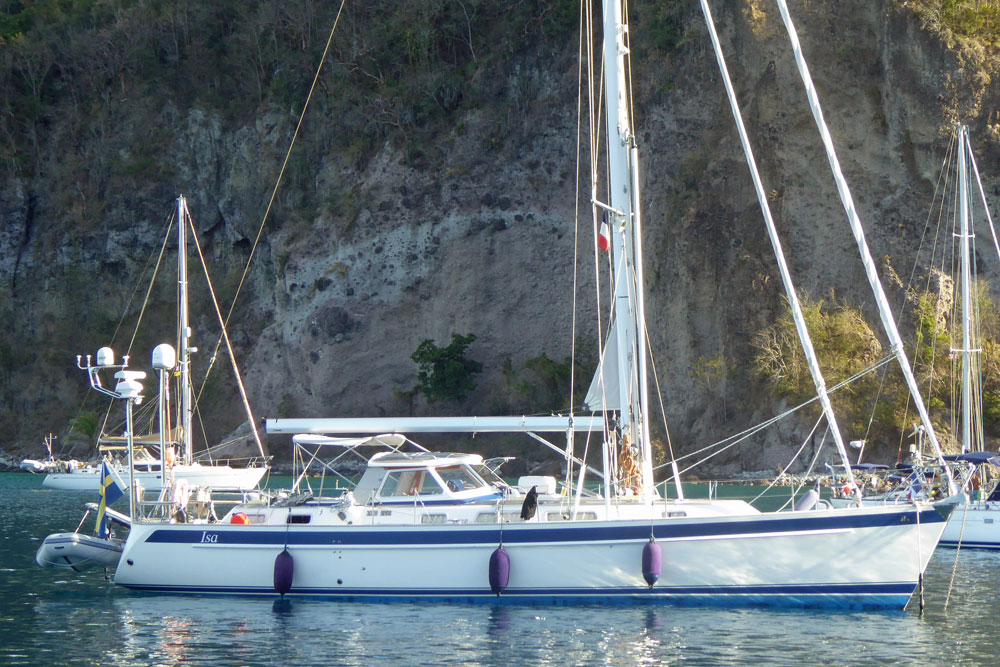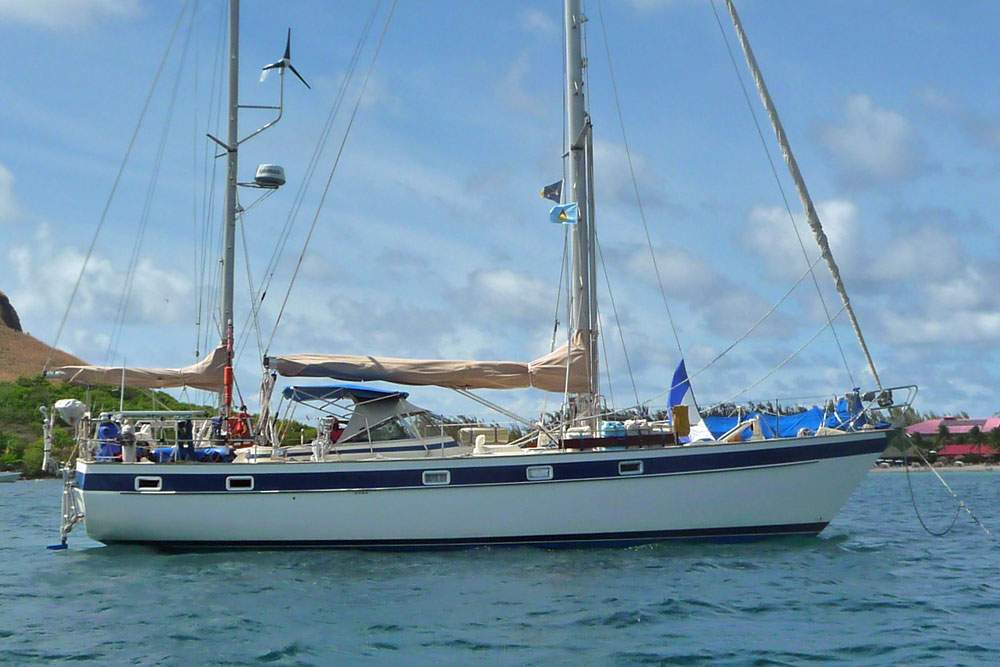- Home
- Cruising Sailboats for Sale
- Hallberg-Rassy 41 Specs
The Hallberg-Rassy 41
Specs & Key Performance Indicators
The Hallberg-Rassy 41 specs and KPIs set out here tell us much about how this moderate displacement masthead ketch is likely to behave in a seaway...
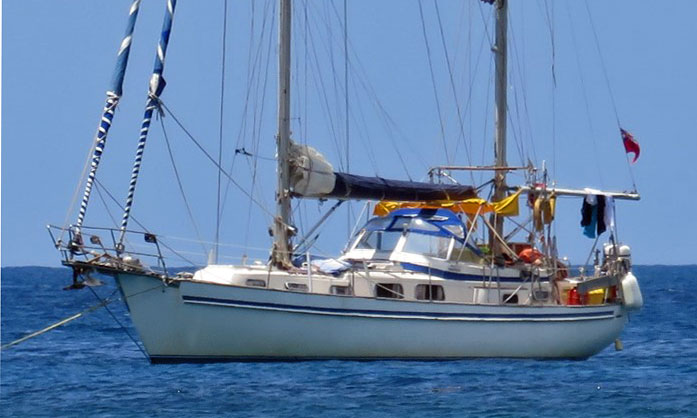 The Hallberg-Rassy 41 Ketch sports a double-headed rig
The Hallberg-Rassy 41 Ketch sports a double-headed rigPublished Specification for the Hallberg-Rassy 41
Keel & Rudder Configuration: Fin keel & skeg-hung rudder
Hull Material: GRP (Fibreglass)
Length Overall: 41'0" (12.5 m)
Waterline Length: 34'2" (10.4 m)
Beam: 11'10" (3.6 m)
Draft: 6'1" (1.9 m)
Rig Type: Masthead ketch
Displacement: 21,825 lb (9,900 kg)
Ballast: 8,378 lb (3,800 kg)
Water Tank Capacity: 147.9 gal (560 liters)
Fuel Tank Capacity: 121.5 gal (460 liters)
Hull Speed: Approximately 8.1 knots
Designer: Olle Enderlein
Builder: Hallberg-Rassy (Sweden)
Year First Built: 1975
Year Last Built: 1981
Number Built: 105
Sail Areas & Rig Dimensions
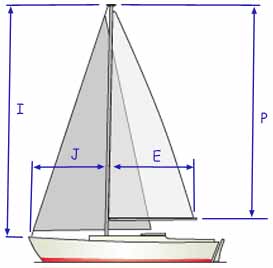
I: 50.0 ft (15.24 m)
J: 17.3 ft (5.27 m)
P: 44.5 ft (13.56 m)
E: 15.2 ft (4.63 m)
Sail Areas:
Mainsail Area: 371 ft² (34.5 m²)
Mizzen Sail Area: 126 ft² (11.7 m²)
Genoa Area: 597 ft² (55.5 m²)
Jib Area: 366 ft² (34 m²)
Upwind Sail Area: 1,095ft² (101.7 m²) .
Published Design Ratios
The Key Performance Indicators (KPIs)
The following analysis of the primary design ratios gives an indication of the boat's likely sailing characteristics, but see the 'Notes of Caution' that follow below:
- Sail Area/Displacement Ratio (15.9): This figure suggests the boat is moderately powered. While not a speed demon, it possesses enough sail area to provide good performance in various wind conditions.
- Ballast/Displacement Ratio (38.4): This ratio signifies a substantial amount of ballast relative to its displacement. This translates to a very stiff boat, meaning it will resist heeling significantly, even in strong winds. This characteristic contributes to a comfortable and secure experience underway.
- Displacement/Length Ratio (244): Falling within the "Moderate Displacement" category, this ratio suggests a balance between performance and comfort. It won't be as easily driven to its hull speed as a lighter boat but will offer a smoother motion in waves and generally be more stable.
- Comfort Ratio (38.6): This score points towards a comfortable ride. The boat is likely to be quite stable and forgiving, minimizing excessive pitching and rolling, making for a pleasant experience, particularly on longer passages.
- Capsize Screening Formula (1.7): This score strongly indicates the Hallberg-Rassy 41 is well-suited for offshore sailing. The low number suggests a high resistance to capsize, making it a safe and stable platform for bluewater voyages.
In conclusion: The Hallberg-Rassy 41 appears to be a well-balanced cruising sailboat prioritizing stability, comfort, and seaworthiness over pure performance. It's a boat designed for enjoyable and safe passages, even in challenging conditions
Here's how to calculate the KPIs yourself - without having to wrestle with the mathematics...
Design Ratios: Notes of Caution...
- The Sail Area/Displacement Ratio (SA/D): This ratio provides an estimate of the sail power relative to the boat's weight, which can indicate potential speed in various wind conditions. But it doesn't account for the efficiency of the sail plan, the rigging, or the skill of the crew. Real-world performance can vary significantly based on these factors.
- The Ballast/Displacement Ratio (B/D): This ratio gives an idea of the boat's stability and stiffness, which is crucial for handling and safety. But it doesn't consider the distribution of the ballast or the hull shape, both of which can greatly affect stability. A high B/D ratio alone doesn't guarantee a stable boat if the ballast is poorly distributed.
- The Displacement/Length Ratio (D/L): This ratio helps predict the boat's speed potential and its behaviour in different sea conditions. But it doesn't account for the hull design or the boat's overall weight distribution. Two boats with the same D/L ratio can perform very differently if their hull shapes are different.
- The Comfort Ratio (CR): This ratio estimates the boat's motion comfort in a seaway, which is important for long passages. But it doesn't consider the boat's interior layout, which can also affect comfort. Additionally, personal tolerance to motion varies, so a boat that is comfortable for one person might not be for another.
- The Capsize Screening Formula (CSF): This formula assesses the likelihood of a boat capsizing in heavy seas, which is critical for offshore safety. But it doesn't take into account the boat's handling characteristics or the skill of the crew. A boat with a low CSF can still capsize if poorly handled in severe conditions.
General Limitations
- Static Nature: These ratios are static measurements and don't account for dynamic factors like wave action, wind gusts, or crew actions.
- Simplification: They simplify complex interactions into single numbers, which can be misleading. Real-world performance is influenced by a multitude of factors that these ratios can't fully capture.
- Context: The context in which the boat is used (e.g., coastal cruising vs. offshore racing) can greatly affect how these ratios should be interpreted.
In summary, while these ratios provide valuable insights into the theoretical performance characteristics of a sailboat, they should be used as part of a broader assessment that includes practical experience, sea trials, and expert advice.
Other sailboats in the Hallberg-Rassy range include:
This article was written with the assistance of Gemini, a large language model developed by Google. Gemini was used to gather information, summarize research findings, and provide suggestions for the content and structure of the article.
Recent Articles
-
Sailboat Wheel Steering Maintenance & Inspection Checklist
Dec 30, 25 02:32 PM
Keep your vessel’s helm responsive and reliable with our expert maintenance checklist. Master cable tensioning and system inspections to avoid mid-passage failures. -
Modern Boat Electronics and the Latest Marine Instruments
Dec 20, 25 05:27 PM
Should sailboat instruments be linked to the latest boat electronics as a fully integrated system, or is it best to leave them as independent units? -
Hans Christian 43: Classic Bluewater Cruiser & Liveaboard Sailboat
Dec 10, 25 04:37 AM
Explore the Hans Christian 43: a legendary heavy-displacement, long-keel sailboat. Read our in-depth review of its specs, design ratios, and suitability for offshore cruising and living aboard.
